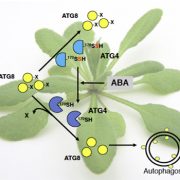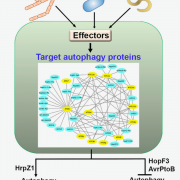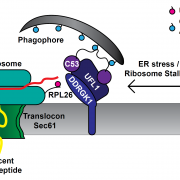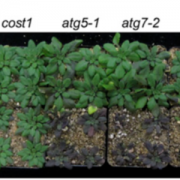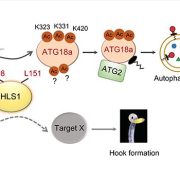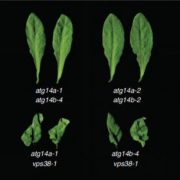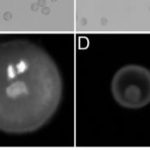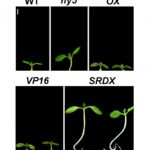Viral proteins activate autophagy
Ismayil et al. identify a virus that activates autophagy and reveal the underlying mechanism.
Plant Cell https://doi.org/10.1105/tpc.19.00759
By Asigul Ismayil, MOE Key Laboratory of Bioinformatics, Center for Plant Biology, Tsinghua-Peking Joint Center for Life Sciences, School of Life Sciences, Tsinghua University, Beijing, China.
Background: Autophagy is an evolutionarily conserved process that recycles damaged or unwanted cellular components, and emerges as an essential defense against pathogens including viruses. Plant pathogen infection is often associated with autophagy activation. However, how pathogens activate autophagy is not well understood. In addition, no viral proteins are reported to activate autophagy in plants. In this study, we identify a plant viral protein responsible for autophagy induction and uncover the underlying mechanism.
Question: We set out to answer which protein from CLCuMuV is responsible for induction of autophagy and what is the underlying mechanism.
Findings: Here, we report that Cotton leaf curl Multan betasatellite (CLCuMuB)-encoded protein βC1 activates autophagy by disrupting the interaction of ATG3 with Glyceraldehyde-3 Phosphate Dehydrogenases (GAPCs). Further, a mutant βC1 protein (βC13A) failed to disrupt the NbGAPCs-NbATG3 interaction and failed to induce autophagy. Consistent with a decreased autophagy level, a CLCuMuB carrying βC13A showed more severe viral symptoms and more viral DNA accumulation. Thus, our work identified a viral protein responsible for autophagy induction and uncovered the underlying mechanism.
Next steps: It would be interested to determine whether other (gemini) viral factors affect autophagy and to decipher the underlying mechanisms during plant–virus interactions.
Asigul Ismayil, Meng Yang, Yakupjan Haxim, Yunjing Wang, Jinlin Li, Lu Han, Yan Wang, Xiyin Zhenga, Xiang Wei, Ugrappa Nagalakshmi, Yiguo Hong, Linda Hanley-Bowdoin, Yule Liu. (2019). Cotton leaf curl Multan virus βC1 Protein Induces Autophagy by Disrupting the Interaction of Autophagy-Related Protein 3 with Glyceraldehyde‑3‑Phosphate Dehydrogenases. Plant Cell; DOI: https://doi.org/10.1105/tpc.19.00759



